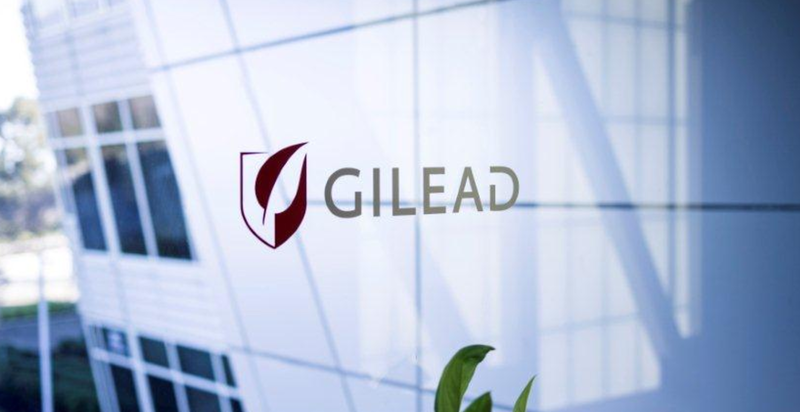2019 was not a good year for Gilead’s fatty liver programs. Its lead prospect did worse than placebo in not one, but two, phase 3 studies, while its combination treatments also fell short in phase 2. It’s not letting those efforts go to waste, though—in studies presented at this year’s virtual International Liver Congress, Gilead and partner PathAI suggest improvements to NASH drug development.
Those include the development of combination treatments for nonalcoholic steatohepatitis (NASH), as well as the use of machine learning methods to assess liver biopsy images, currently the gold standard for diagnosing NASH.
Gilead presented full data from ATLAS, a phase 2b study that tested firsocostat, an ACC inhibitor, and cilofexor, an FXR agonist, alone and in combination with each other, as well as with selonsertib, the ASK1 inhibitor that failed two phase 3 studies last year. The main takeaway did not change from the topline reveal last December—none of the treatments or combos beat placebo at reducing liver scarring as measured by biopsy—but the company did share a few more details.
The cilofexor-firsocostat combination performed the best on the primary endpoint, cutting liver scarring without worsening of NASH in 21% of patients with advanced fibrosis, but it did not beat placebo by a wide enough margin to be considered a success. Rohit Loomba, M.D., who presented the results said that might be a result to the small study size.
Drilling down, the study found the cilofexor-firsocostat combination did “significantly better” than placebo at reducing liver stiffness. After 48 weeks of treatment, 45% of patients taking the combo saw a 25% drop in liver stiffness measured by FibroScan, an ultrasound-based test, versus 20% of placebo patients. It also beat placebo at reducing biomarkers of fatty liver, including elevated liver enzymes and bile acids, as well as reducing liver inflammation (57% versus 29%), leading the investigators to suggest “future studies of combination therapies for advanced fibrosis due to NASH are warranted.”
“There are two main reasons we think the combination approach may be optimal for this disease,” said Rob Myers, M.D., who leads fiver fibrosis clinical research at Gilead. “The first is the biology of the disease—there are multiple pathways at play; it is not simply a disease caused by one insult like a virus… The second reason is the NASH patient population is quite heterogenous and therefore it is likely that compounds that target one mechanism are more likely to benefit one population, while another mechanism might be better in a different population.”
Beyond pursuing treatments that hit multiple drivers of NASH, drugmakers in the space could benefit from improvements to liver biopsy. It’s no secret that liver biopsy is a subjective measure of disease—a pathologist’s findings depend on which part of the liver the sample was taken from and on the pathologist’s own experience. What’s more, findings can differ between pathologists and even the same pathologist can turn up different results on different days.
Gilead and PathAI are working on machine learning approaches that can take this variability out of liver biopsy. The duo presented multiple posters showing that PathAI’s models could accurately and reproducibly assess markers of liver disease in biopsy images and predict which patients are likely to see their disease worsen.
The models aren’t designed to solve other downsides of biopsy, such as their invasive nature, or the fact that they only consider a narrow slice of the liver: “We can’t solve the invasive part,” PathAI CEO Andy Beck said. “But we can extract as much medically useful information from each biopsy as possible using machine learning.”
“In the context of ATLAS, the evaluated rates of fibrosis improvement based on central pathologists’ reading were not statistically significant… Using machine learning approaches, we were able to see a significant reduction in fibrosis, as well as a shift from advanced fibrosis patterns to less advanced fibrosis patterns,” Myers said.
“It suggests we are indeed seeing a regression of fibrosis that perhaps is not being picked up by conventional staging because of insensitivity,” he added.
Gilead and PathAI hope to get machine learning approaches approved for use in clinical trials. They’re already using such models, of course, but regulators still use traditional biopsy—that is, images read by humans—as the endpoint in NASH studies.
PathAI is working with industry partners and the FDA to work toward incorporating machine learning in those NASH endpoints, Beck said. He hopes that machine learning will become the new standard for how pathology is measured within the next couple of years.
As for Gilead’s NASH pipeline, the company is testing the cilofexor-firsocostat combo in tandem with Novo Nordisk’s GLP-1 drug semaglutide.
“We continue to analyze the data from the ATLAS study, as well as other ongoing studies we have, for example, our study collaboration with Novo Nordisk,” Myers said. “We continue to evaluate those data and discuss with regulators the optimal path forward for these therapies.”

